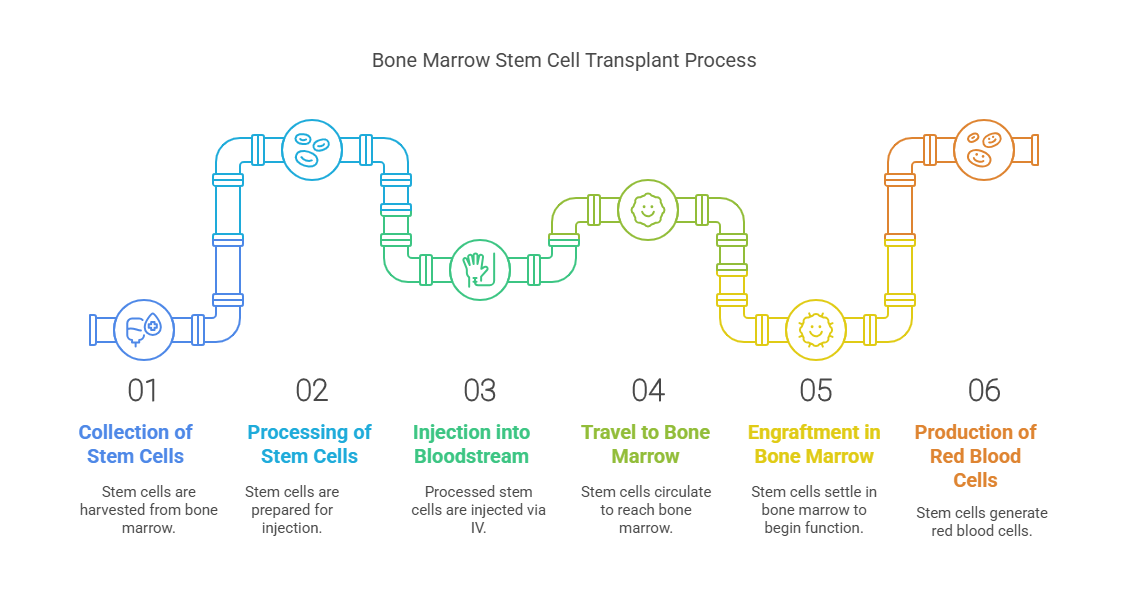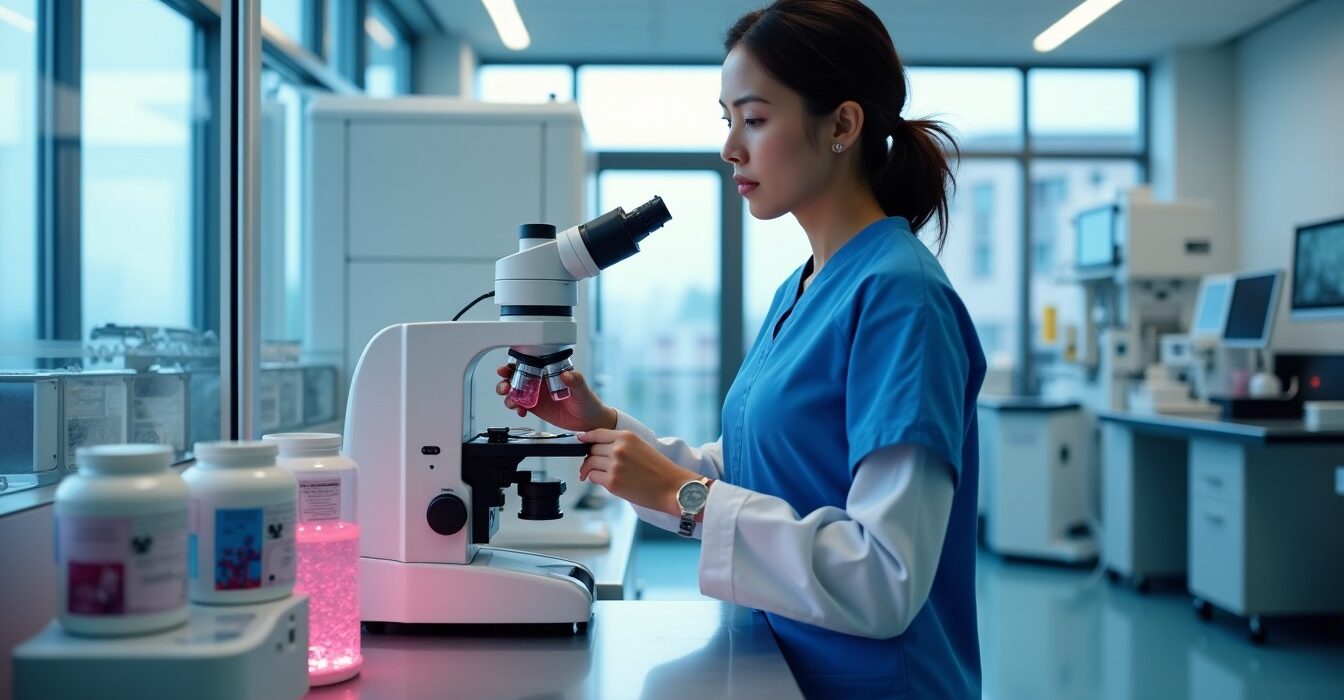Stem Cell Treatment Benefits: What Regencord Pereira Patients Need to Know
Stem cell therapy in Colombia gives patients a remarkable advantage. Treatments cost $5,000 to $15,000—substantially lower than Western prices while delivering the same high medical standards. This cutting-edge treatment helps patients with conditions of all types, from joint injuries and autoimmune disorders to heart issues and diabetes. Stem cell transplants, a specific form of this therapy, are increasingly used for various cancers and blood disorders.
Many patients ask if stem cell treatment equals bone marrow transplant. These procedures serve different purposes and have unique applications, though both involve stem cell transplant techniques. Regencord in Pereira stands out as a leading stem cell therapy destination in 2024. The facility provides detailed care that includes pre-treatment evaluations and personalized therapy plans. The Colombian government’s strict regulation of stem cell treatments aligns with international standards and will give patients safe and effective medical solutions.
This piece covers essential information about stem cell therapy at Regencord Pereira. Patients will learn about treatment options, procedures, costs, and what to expect during recovery, including insights into both stem cell and bone marrow transplants.
Understanding Stem Cell Therapy at Regencord Pereira
“Stem cells are remarkable. Did you know they are present in every tissue of your body, ready to heal and rejuvenate? However, as we age or face illness, their vitality decreases.” — Dr. Julieta Henao Bonilla, Medical Geneticist and Co-founder of Regencord.
Regencord in Pereira has become a leader in regenerative medicine. This biotechnology center has treated more than 5,000 patients worldwide over the past decade. Their stem cell therapy facility delivers breakthrough treatments backed by scientific evidence and cutting-edge technology, including various types of stem cell transplants.
What Are Stem Cells, And How Do They Work?
Stem cells serve as the body’s natural repair and regeneration system. These remarkable cells have two key features that make them powerful healing agents. They can divide endlessly while staying unchanged, and they can turn into many different types of specialized cells. But what does a stem cell look like? Under a microscope, they appear round and featureless, waiting to differentiate into specific cell types.
These cells work in three main ways. They replace damaged organ cells with new ones, give aging cells fresh mitochondria to rejuvenate them and release active molecules that fight inflammation and cell death. Blood stem cells, found in bone marrow, are particularly important for blood cell production.
Stem cells also talk directly to nearby cells and tell them to stop harmful behaviors, such as excessive inflammation. This network of communication creates the perfect environment for healing.
Success in stem cell therapy depends on proper handling and delivery. Regencord’s team of experts in biology, genetics, medicine, and bacteriology works together to deliver safe and science-based treatments.
Types of Stem Cell Treatments Offered
Regencord customizes its stem cell therapies to match each patient’s needs. They use several types of stem cells:
- Adult stem cells – These cells live in body tissues and can become specific cell types within their tissue.
- Mesenchymal stem cells (MSCs) turn into bone, cartilage, and fat cells, making them perfect for treating bone and joint problems.
- Bone marrow stem cells – These are hematopoietic stem cells that develop into various blood cell types.
Every treatment at Regencord starts with a detailed consultation and evaluation. The process includes collecting stem cells, processing them in their advanced lab, and precise delivery using modern medical imaging. The clinic offers both autologous stem cell transplants, using the patient’s cells, and allogeneic stem cell transplants, which use donor stem cells.
Regencord makes all stem cells in its facility under strict quality controls. It follows international standards like ISO 9001, ISO 13022, and ISO 22859. This attention to detail gives patients safe and effective treatments.
Conditions Treated at Regencord Pereira
Regencord treats a wide range of conditions throughout the body. Their neurological treatments help patients with multiple sclerosis, Parkinson’s disease, Alzheimer’s disease, autism, cerebral palsy, stroke, and various traumas.
Patients with joint problems find relief through stem cell therapies that target arthritis, osteoarthritis, and cartilage damage. These treatments restore movement and ease pain. Athletes recover faster from sports injuries with specially designed therapies that boost performance.
Regencord also treats heart disease, breathing problems, liver disorders, and conditions like diabetes. Stem cells help balance the immune system, which benefits patients with autoimmune disorders such as rheumatoid arthritis, lupus, psoriasis, and systemic sclerosis.
Age-related concerns get special attention at Regencord. They offer treatments for fragility and preventive care that tap into stem cells’ youth-restoring properties. Sexual health issues, including erectile dysfunction and female infertility, also respond well to their treatments.
Stem cell transplants for cancer have become a crucial treatment option. The clinic offers stem cell cancer treatment for various types, including leukemia, lymphoma, and myeloma. They also treat myelodysplastic syndromes, a group of disorders where blood cells don’t mature properly in the bone marrow.
Stem cell therapy gives hope to patients who don’t see results from regular treatments. Each patient receives a personalized treatment plan based on a full evaluation of their needs.
The Stem Cell Treatment Process
Stem cell treatment at Regencord Pereira follows a step-by-step process that will give a safe and effective outcome for each patient. This therapy stands apart from regular treatments because it needs careful planning and precise execution at every stage.

Original Consultation and Eligibility Assessment
Your trip starts with a complete review to check if you qualify for stem cell therapy. Doctors will give you a full picture through:
- A complete health history and physical exam
- Blood tests to check blood counts, kidney function, and liver function
- Diagnostic imaging like CT scans or MRIs
- Specific tests linked to your condition
Not everyone can get stem cell treatment. The best candidates have good health and can handle daily activities independently. They should not have serious liver or heart conditions. Doctors also consider mental health and make sure patients have enough support during and after treatment.
Pre-Treatment Preparation Steps
After qualifying, we begin preparing for the procedure. The first step involves inserting a central venous catheter (CVC) into a large vein near your collarbone or neck. This catheter helps administer medications, take blood samples, and deliver stem cells throughout your treatment.
Most patients need conditioning treatment before the transplant. This might include chemotherapy and sometimes radiation therapy, based on what we’re treating. Your disease type and overall health determine how intense this treatment needs to be. Some patients may undergo reduced-intensity conditioning, a less aggressive approach that can be suitable for older or less fit patients.
The Stem Cell Extraction Procedure
We collect stem cells using one of two main methods. The first method takes cells right from your bone marrow, usually from the hip bone. You’ll need anesthesia since we use a needle to get the marrow out. This is known as a bone marrow transplant (BMT medical abbreviation).
These days, we mostly use peripheral blood stem cell transplantation (PBSCT, medical abbreviation). Patients take medications like granulocyte colony-stimulating factor (G-CSF) for several days, which helps make more stem cells. Then, we draw blood and run it through a machine that separates and collects stem cells—a process called apheresis. Each session takes 3-5 hours, and you might need several days of collection to get enough cells.
In some cases, especially for certain pediatric conditions or when adult donors aren’t available, we might use an umbilical cord blood transplant. This source provides less mature stem cells, which may have advantages in certain situations.
How Stem Cells are Processed and Administered
Our specialized labs process these stem cells with strict quality controls to ensure they’re pure and viable. Sometimes, we freeze the cells in liquid nitrogen until needed, especially when using a patient’s cells for treatment.
The transplant day is straightforward. We give you the stem cells through your central line, just like a blood transfusion. This takes about an hour and doesn’t hurt. Your stem cells travel through your blood to the bone marrow and start making new blood cells – we call this engraftment.
Recovery needs close monitoring to watch for side effects and track how well the engraftment works. Each person’s recovery time differs based on their procedure and health, but most patients stay under observation for several weeks while their bodies respond to treatment.
Comparing Stem Cell and Bone Marrow Transplants
Patients at Regencord Pereira often ask, “Is stem cell treatment the same as bone marrow transplant?” People use these terms interchangeably, but each represents a different collection method within the same treatment approach. Understanding the difference between stem cells and bone marrow transplants is crucial for patients considering these procedures.
Key Differences Between Stem Cell and Bone Marrow Transplants
The main difference between stem cell and bone marrow transplants isn’t about the procedure itself. It’s about where doctors get the transplanted cells from. Both procedures are actually forms of stem cell transplantation that differ only in how cells are collected.
A bone marrow transplant (BMT) involves removing stem cells straight from the bone marrow—usually from the back of hip bones—using a special needle while the patient is under anesthesia. A stem cell transplant also called a peripheral blood stem cell transplant (PBSCT), collects stem cells from the bloodstream through a process similar to blood donation called apheresis.
These days, stem cell transplants using peripheral blood are more popular than traditional bone marrow transplants:
- Getting stem cells from the bloodstream is a lot easier than from bone marrow
- The bloodstream usually yields more cells
- Blood counts bounce back faster after peripheral blood stem cell transplants
Whatever collection method doctors use, both procedures have the same end goal: replacing damaged bone marrow with healthy blood-forming stem cells to restore blood cell production.
When is Each Procedure Recommended?
Doctors pick between peripheral blood stem cell transplant and bone marrow transplant based on the patient’s condition, health, and age. Stem cell transplants help treat many conditions, such as:
- Blood cancers like leukemia and lymphoma
- Blood disorders, including sickle cell anemia
- Certain autoimmune diseases
- Cases where strong chemotherapy has hurt bone marrow
Doctors can perform both procedures as either:
Autologous transplants: The patient’s stem cells are collected before treatment starts. This removes rejection risk but might reintroduce some cancer cells.
Allogeneic transplants: Stem cells come from a matched donor (related or unrelated). These need close HLA matching to prevent rejection but offer a “graft-versus-cancer effect” where donor cells help fight cancer directly.
The choice between autologous vs. allogeneic transplants, often referred to as “auto vs. allo” in medical shorthand, depends on the specific condition being treated and the availability of a suitable donor.
Traditional bone marrow collection might work better if getting enough stem cells from blood proves challenging. The core team considers disease type, cancer stage, overall health, and donor availability before recommending either procedure.
How Stem Cells are used in Bone Marrow Transplants
People call it a “bone marrow transplant,” but the procedure actually uses stem cells from bone marrow. Once collected, these stem cells—no matter where they’re from—work the same way in the body.
The medical team processes these stem cells and injects them into the patient’s bloodstream through an IV line, much like a blood transfusion. The cells travel through the body until they reach bone marrow cavities.
Inside the bone marrow, transplanted stem cells start making new blood cells—doctors call this engraftment. These cells develop into different blood components:
- Red blood cells (carrying oxygen)
- White blood cells (fighting infection)
- Platelets (controlling bleeding)
The bone marrow contains stem cells that develop into all these blood cell types, highlighting the importance of bone marrow stem cells and other stem cells in maintaining healthy blood production.
In allogeneic transplants, new blood cells carry the donor’s genetic material. This gives the recipient a new immune system that can help fight remaining cancer cells through the graft-versus-cancer effect. However, it also introduces the risk of graft-versus-host disease, where the donor immune cells attack the recipient’s tissues.
For some high-risk patients, doctors might use a specialized approach called MUD (Matched Unrelated Donor) allogeneic stem cell transplant. This involves finding a donor closely matched to the general population when a related donor isn’t available.
Cost and Value of Stem Cell Treatment in Colombia
The cost of stem cell therapy is a vital consideration for patients looking at Regencord Pereira. Colombia has become a top choice for people seeking affordable and quality regenerative treatments, including various types of stem cell transplants.
The Average Cost of Treatments at Regencord Pereira
Regencord Pereira’s stem cell treatment for knee osteoarthritis starts at €6,306 or USD 6,900. Patients can choose a package that includes hotel stays at €7,200 or USD 7,900. These prices show Regencord’s steadfast dedication to making quality regenerative medicine available to more people.
Factors Affecting Treatment Pricing
The final cost of stem cell therapy at Regencord depends on several key factors:
- Treatment complexity: Procedures for neurological conditions cost more than orthopedic treatments
- Stem cell source: Using a patient’s stem cells costs less than using donor cells
- Required sessions: Some conditions need multiple treatments, which adds to the total cost
- Laboratory processing: The detailed preparation of stem cells, which includes isolation, expansion, and quality checks, affects the price.
Cost Comparison with Other Countries
Colombian stem cell therapy offers big savings. Treatment costs range from USD 5,000 to USD 15,000, which is 50-70% less than similar treatments in the United States and Europe. US procedures can cost between USD 20,000 and USD 50,000. European countries charge USD 8,000 to USD 35,000.
These lower prices come from reduced operating costs, better exchange rates, and competitive pricing in Colombia’s healthcare system.
Insurance and Financing Options
Most insurance plans don’t cover stem cell therapies because they call them experimental. Yet some specific treatments have insurance support:
- Medicare covers FDA-approved stem cell therapies, mainly blood cell transplants that help healthy blood cell growth
- Medicare Part A might pay for hospital stays, while Part B could cover outpatient procedures when needed
Colombian clinics help patients without insurance by offering payment plans. Many work with medical tourism companies to provide complete packages of treatment, lodging, and travel.
Stem cell therapy in Colombia offers patients more than cost savings. It makes innovative treatments available to people who might not otherwise be able to afford them.
What to Expect After Treatment
“Today, thanks to stem cell therapy, I experience significant relief, with my condition managed to a 90% improvement level. After enduring nearly two years of isolation and discomfort, I now lead a more normal life, appreciating every moment of freedom from debilitating symptoms.” — Tony Grajales, Patient treated for atopic dermatitis at Regencord.
Recovery after stem cell therapy needs proper care and monitoring. Patients at Regencord Pereira should know what to expect after their treatment. This knowledge helps ensure the best results and reduces complications.
Typical Recovery Timeline
Stem cell therapy recovery happens gradually over several months. Most patients feel some immediate relief when stem cells start repairing tissues, but the full benefits take time to demonstrate. Clinical observations show measurable results appear within 3-6 months after treatment.
Most patients notice improvements within their first 6 weeks. The regenerative process continues inside the body for 4-6 months after the procedure. Stem cells reach their peak potency between the third and sixth month after treatment.
A full recovery could take up to one year. During this time, patients slowly regain their strength and return to normal activities, though some limitations exist.
Post-Treatment Care Instructions
Proper aftercare directly affects treatment outcomes. Patients must avoid anti-inflammatory medications for at least six weeks after the procedure because they can harm stem cell function. Acetaminophen (Tylenol) works best for pain management.
Physical activity guidelines include:
- Rest for the first 24-48 hours
- Light activity introduction after the rest period
- Physical therapy starts within one week after the procedure
- No strenuous exercise for several weeks
Ice helps control inflammation, while heat works better for muscle spasms or aches. Most patients return to their daily activities within 2-3 days without long hospital stays or extensive physical therapy.
Follow-up Appointments and Monitoring
Regular check-ups help track progress and catch potential complications early. Weekly visits become less frequent as recovery progresses.
Healthcare providers perform these assessments during visits:
- Blood tests check blood counts and organ function
- Physical examinations show overall recovery progress
- Bone marrow tests might be needed in some cases
Conclusion
Patients looking for regenerative treatments should know the key differences between bone marrow transplants and modern stem cell therapy. Bone marrow transplants created the foundation for cellular therapy. Medical science has advanced greatly and now offers multiple sources and ways to collect stem cells.
Today’s stem cell therapy includes many treatment options. You can collect stem cells from peripheral blood or preserve umbilical cord blood. These options help patients recover faster and have fewer complications at donor sites compared to traditional bone marrow collection. Regencord’s specialized facilities have created complete protocols that combine the latest collection techniques with strict quality controls.
Medical teams can tailor treatments to each patient’s needs by choosing between autologous and allogeneic transplants from different stem cell sources. This tailored approach follows strict quality standards and specialized protocols, helping to expand stem cell therapy beyond treating blood disorders.
The field of stem cell treatment is evolving. It gives hope to patients with many conditions while maintaining the proven benefits of regular bone marrow transplants. Organizations like Regencord continue to improve their techniques, and their work points to even more promising developments in the future.



